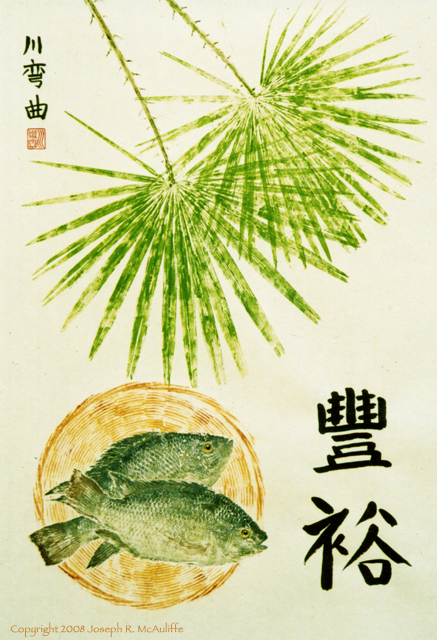
A scene with Nile tilapia carried in a wicker basket has recurred countless times during the course of human history. Nile tilapia (Oreochromis niloticus) were cultivated in ponds along the Nile River 4,500 years ago by the ancient Egyptians, who designated it with a unique hieroglyph. The fish is occasionally referred to as St. Peter’s fish, because it is claimed to be what Peter the Fisherman often netted and also what Jesus used to feed the multitudes in the miracle of the loaves and fishes. The biblical connection is certainly possible; the native range of the Nile tilapia extends from Syria and Israel south into Africa.
Because of their rapid growth and fine flavor, today tilapia are one of the most important fishes used in aquaculture. After the carps, they are the second most important group of fish raised in the world. Cultivated tilapias are typically hybrids between the Nile tilapia and other closely related species native to Africa. Tilapias are one of the easiest and profitable fish to farm, in part because they are omnivorous and can be fed a diet derived exclusively from plants. In contrast, the culture of carnivorous fish such as Atlantic salmon require feeds derived in part from the harvest of wild fish like anchovies and menhaden from the ocean. Only a fraction of the wild fish used as food is converted into salmon flesh and the quantity of feed required can undermine natural marine food chains. Tilapia and other fish that feed on vegetable materials offer a much more ecologically sound and environmentally friendly means of providing humankind with an abundance of nutritious and delicious fish.
In 2005, Dr. Modadugu Gupta, a scientist from India, was awarded the World Food Prize for his work to bring improved nutrition to a million extremely poor people in south and southeastern Asia and Africa. His work introduced landless farmers and poor women to unique methods of cultivating fishes, including tilapia, in abandoned ponds, roadside ditches, seasonally flooded fields, and other unused places, thereby showing ways of raising food and providing income to some of the region’s most impoverished peoples. Whether or not Jesus fed the multitudes with tilapia caught by St. Peter, tilapia is certainly helping to feed the multitudes today.
The two bold Chinese characters read “feng yu” (abundance).
Size: 36 x 24 inches (2003)
Return to Gallery 7.